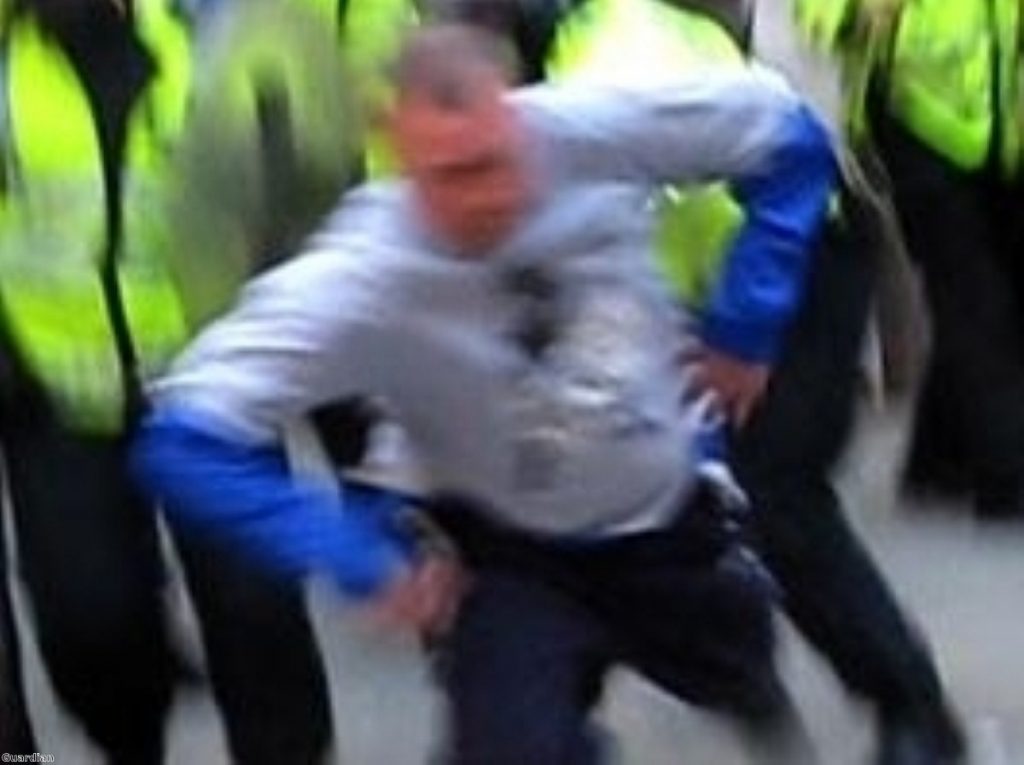Ian Tomlinson: After four years, the Met apologises
The Met has finally apologised to the family of Ian Tomlinson and admitted responsibility for his death, four years after he was killed during the G20 protests in London.
Tomlinson, a newspaper vendor, died after being thrown to the floor by an officer near the Bank of England, amid violent scuffles between protestors and police.
"I apologise unreservedly for Simon Harwood's use of excessive and unlawful force, which caused Mr Tomlinson's death, and for the suffering and distress caused to his family as a result," deputy assistant commissioner Maxine de Brunner said.
The Tomlinson family have received an undisclosed financial settlement.


Police also apologised for the statements they made to the media in the wake of Tomlinson's death, when they insisted protesters had tried to stop them giving him medical help by throwing missiles.
Video later released to the press showed Tomlinson had in fact been struck by a policeman before he collapsed and that protestors had not tried to prevent medical teams reaching the body.
The Met also apologised for not vetting Harwood properly, given he had been linked to a string of previous disciplinary hearings.
The 47-year-old was originally thought to have died from natural causes and an initial post-mortem gave the cause of death as heart failure.
Video then emerged of Tomlinson being struck with a baton on the leg before being thrown to the ground.
Two further post-mortems found he died of internal bleeding associated with the liver consistent with being pushed to the ground.
An inquest jury found Tomlinson had been unlawfully killed, but a jury later found Harwood not guilty of manslaughter.
The reaction to the Tomlinson death had a significant effect on Met policing of demonstrations, although later student protests in 2010 saw repeated complaints about the tactic of 'kettling', where demonstrators are contained in a certain area, often for a prolonged period of time.
The full statement is below:
"I take full responsibility for the actions of Simon Harwood on 1 April 2009. His actions fell far below the standard we expect from our officers. I accept the finding of the inquest that Mr Tomlinson was unlawfully killed. As the jury found, “at the time of the strike and push Mr Tomlinson was walking away from the police line. He was complying with police instructions to leave Royal Exchange Buildings. He posed no threat”. Today, I apologise unreservedly for Simon Harwood’s use of excessive and unlawful force, which caused Mr Tomlinson’s death, and for the suffering and distress caused to his family as a result.
"The Commissioner also apologies to the family for ill-considered comments made in the media in the immediate aftermath of Mr Tomlinson’s death which served to distract attention away from the investigation into the death. Further, it is a matter of deep regret that Mr Tomlinson’s family learned of the nature of his contact with Simon Harwood through the press, rather than from our officers. I fully appreciate and regret the distress this must have caused the family.
"The Commissioner further apologises for the information given by a Metropolitan police officer to Dr Shorrock and Dr Swift that misled them initially as to the cause of death. Whilst we are satisfied that the officer’s actions were inadvertent, and not designed to mislead the pathologists, this should not have happened and I apologise to the family for the additional distress it caused them.
"Issues concerning the failure to discipline Simon Harwood and his re-admission into the Metropolitan Police in 2004 have been a source of concern and upset for the family. It is clear that insufficient recording and checks meant that detailed information regarding the officer’s misconduct history was not shared at key points. We got it wrong. The Commissioner acknowledges that this case has highlighted significant failings in the vetting procedures of the Metropolitan police service and we have taken steps to put in place new procedures that will improve public confidence".









